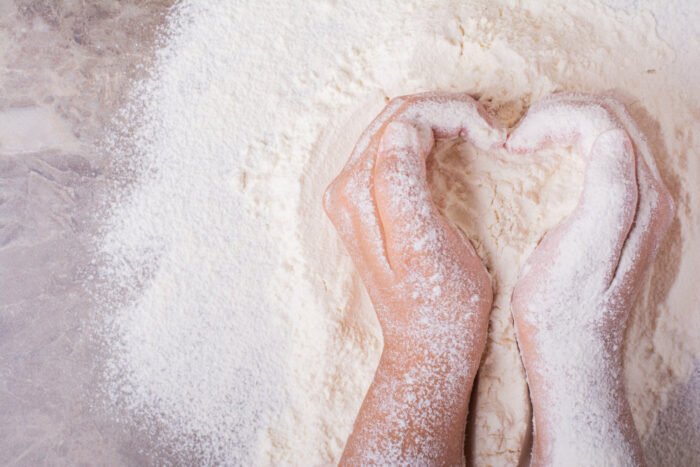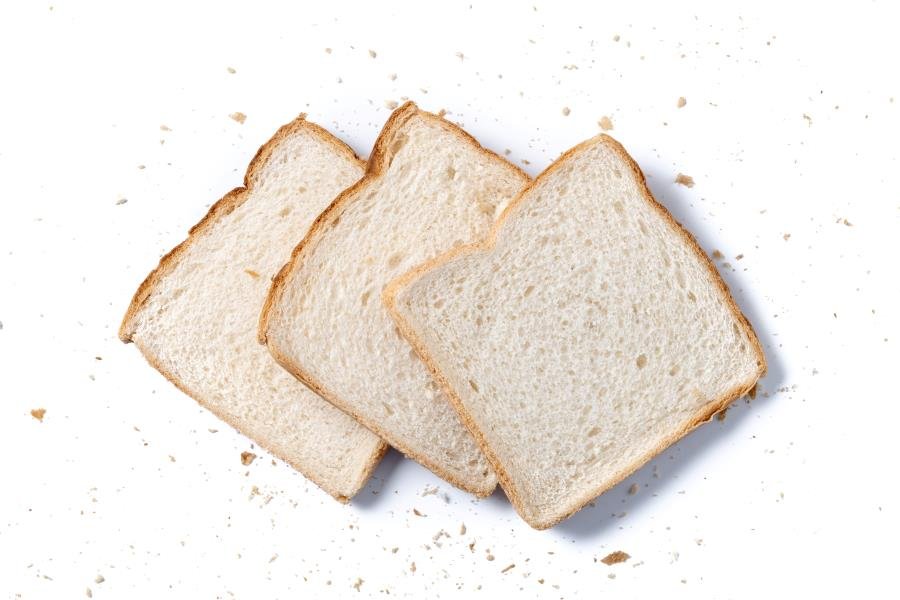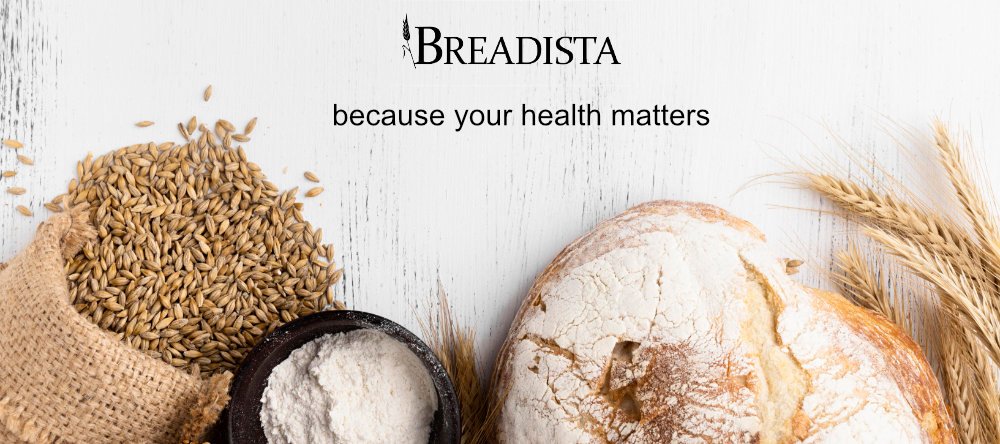What means ‘enriched’ flour, is it bad? – You’ve read it several times, more or less consciously. If you take a closer look at food labels of baked goods like bread, cakes, cookies, crackers and cereals, you’ll find this term very often. Unfortunately.

[updated 09/25/2025]
Flour has naturally vitamins, fibers and minerals, e.g. magnesium, zinc, potassium. But the more processed it is, the less of the good stuff is left. When you mill the whole grain, you get e.g., Whole Wheat Flour. This type of flour contains all the different parts of the kernel. To get to the whiter flour the bran and germ gets sifted out until only the white parts of the inner endosperm is left and milled even further and finer. And you guessed it, with the bran and germ gone, the fiber and most of the minerals and vitamins are gone too. With all the good stuff sifted out the white flour is almost ‘starch’ only. For that reason iron and B-vitamins are added back again in form of: folic acid, riboflavin, niacin, and thiamine.
The history of enriched flour
White bread was in the early 1900’s reserved for special occasions and the rich upper class. Due to the high cost of wheat, it turned into a luxury grain at the time. With industrialization, a loaf of bread could be produced more cheaply. The price of a white bread was now affordable even for the middle class. Later in the 1930’s the typical white bread (stripped of everything good) was so popular that it caused mineral and vitamin deficiencies in many people. More and more health issues occurred, like Pellagra and Beriberi (vitamin B deficiencies).
Historical records show that flour enrichment in the United States was introduced as a public health measure around 1941. It is said, that the US Army during these time pushed extremely for the enriched flour to ‘nourish’ the troops. How far the market leader at the time, Wonder Bread, was involved to push this step forward, is not clearly stated, but it seems obvious.

White flour is often referred to as ‘empty calories’, because there is not much valueable in it anymore. It is nearly ‘milled to death’. Without the fiber the product gets rapidly digested and absorbed which ends in a rollercoaster for your blood sugar levels. More hunger, cravings and snacking are pre-programmed.
The problem with enriched flour
With the fortifying (the enrichment) the white flour turns even worse. The industry puts back the earlier removed minerals and vitamins to pretend the ’healthiness’, but those back-added ingredients are man-made and synthetic. They do not feed your cells as the natural ones would do. Many people are actually sensitive to it, take iron for instance. The added form of iron cannot be absorbed as easily as the natural form found in whole grain products. It can cause stomach pain and digestive issues. Some studies also suggest, that excessive (involuntarily) intake of enriched flour can mask other deficiencies and could be linked to certain health risks.
When you’re feeling discomfort the next time you eat (commercial produced) bread, it is probably because of the added nutrients, the modern (modified) wheat and/or all the other additives in the loaf. From a nutritional point of view, it is the worst choice you can make. It is sadly just a cheap flour to produce cheaper baked goods.
Yes, enriched flour is bad for your health.
As bad as it is, it is hard to say the following – even though true natural ressources for minerals and vitamins are better, developing countries (as well as some war regions) are relying on it. Without these enrichments many more people would suffer from deficiencies. But, even if it has its right to exist in such regions, it should not be the standard in developed countries. It is definitely not needed where there is access to a broad variation of food.
I know, it is a challenge to cut it off, but it is worth the effort. You just need to start somewhere, for you and your family. Btw, when choosing organic flour, the ‘enriched’ (and bleached) concerns are usually eliminated with one step. Organic flour is much more sustainable produced and helps also the health of the farm workers and the soil. These are all reasons why we’re only using organic flour in our artisan bread mixes.
Did you know? The whole ‘enriched flour’ topic is no issue in Europe because we do not add things to it. We keep it natural. Only exemptions are UK, Kosovo and Moldova. That’s probably another big point why you’re having no digestive problems when you’re on a trip through Europe. 😉
Sign Up to be the 1st to know about a new blog post

[* Source: ‘Food that built America’ , Wikipedia] [Images: by Freepik and Azerbaijan_Stockers]
